
In the Wake of Irma
As Hurricane Irma slowly churns her way out of the Caribbean, it’s difficult to assess the extent of the damage, and to say what’s next for the dozens of islands with economies reliant on tourism and the charter boat industry. Let’s not forget that Hurricane Jose — now rated as a Category 4 storm — is to the east of islands just ravaged by Irma. We’ll keep you up to date as Jose makes its way west.
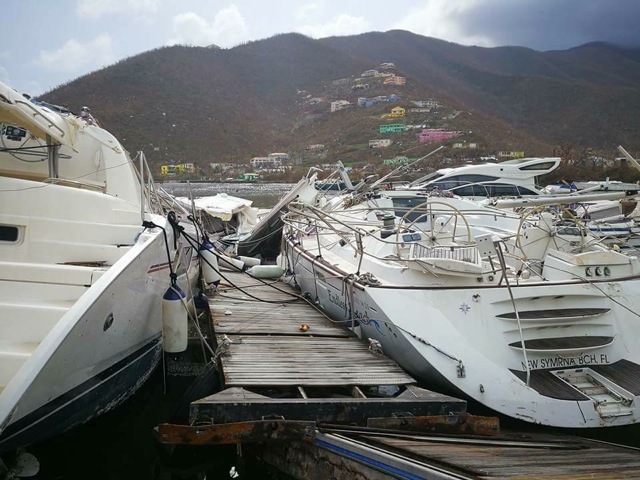
First and foremost, we’re concerned for the people throughout the Caribbean affected by Irma. If you are interested in donating to a charity, here’s a rough breakdown of organizations by the Miami Herald. We’re pleased to hear reports that there have been relatively few casualties from Irma, though the exact extent of fatalities is not yet clear (and official death tolls have allegedly been underreported after other major storms, according to some witnesses).
But the destruction to homes and infrastructure appears to be unprecedented. "On St. Martin, an official said 95 percent of the island was destroyed," the New York Times reported. Almost exactly 22 years ago, Hurricane Luis made landfall in St. Martin, an island split into French and Dutch territory, with the Dutch half called ‘St. Maarten’.
On September 5, 1995, Luis hovered over St. Martin with hurricane force winds for about 20 hours (with tropical force winds lingering for another 18 hours), according to Jack Bush, who owned Sun Yacht Charters at the time — by contrast, Irma appears to have moved quickly, but had much stronger winds.
During Luis, out of some 1600 boats in Simpson Bay Lagoon (what Bush called one of the best hurricane holes in the Caribbean), almost 1300 were destroyed. "It was the single biggest loss of boats in a single location in history," Bush said. The exact toll on St. Martin’s charter fleet is not yet known, but it’s clear there was massive destruction that will take years to recover from; Bush said it took about three years for the fleet to recover after Luis.
We received an email from Jared Pechan from Pacific Grove, who said he and his family bought a boat in the British Virgin Islands this year. "It went through Irma, and it will probably go through Jose this coming weekend," Pechan wrote. "We escaped from Beef Island on one of the last flights, our boat secured on the B dock at Nanny Cay Marina.
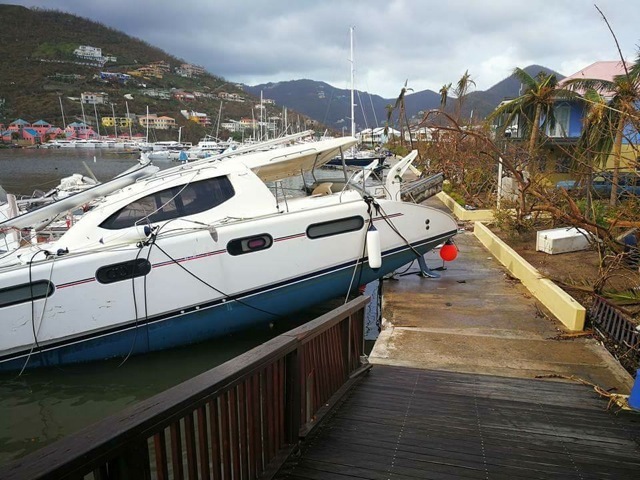
"Our Leopard 46 is still secured to the hurricane moorings in the center of the channel and the starboard dock. The captain of the vessel to my port side kept removing my lines from the cleats on her side (her boat is not seen in these photos, location unknown). If the piers holding the floating docks had been taller, I believe our boat would be relatively unscathed, less the mast and bimini over the helm. We were confident in the Leopard design before and if the insurance company totals the boat, we will be looking for another, maybe farther away from hurricanes though."
We also spoke to Astrid Deeth in Antigua, owner of The Admiral’s Inn in English Harbor, who said that "the good news is, nothing bad happened here. The Nelson’s hurricane hole held up very well. The Slipway was full of boats and they all survived just fine. Part of that is just luck. English Harbor did not face a direct hit. The boats tied up in the mangroves held up fine, though some out in the Bay may have some damage."
And we received an account from Alex (last name unavailable) via the Grenada Cruisers Information Facebook page. Alex had apparently taken refuge in a hotel on St. Martin, while his boat, Nikimat, rode out the storm at a nearby marina.
"The wind has slowed down to acceptable level. A hotel employee came and tried without success to unstick the balcony drain, so we used buckets to throw the water out. Looking at the broken window, they told me the glass is rated at 175 mph for one hour and there was wind up to 200 mph — would be curious to know how fast the wind was.

"The street looks like a war zone. Trucks flew over and landed on cars, branches everywhere. Trying to see Nikimat, but I don’t. When I moved into the suite, I could see the two antennas on the main mast. Still too much wind to go.
"After three hours of removing water from the bathroom, I was tired and the wind was down enough to walk in the street, I walked to the marina. It looked like the apocalypse. All the boats were destroyed. Nikimat was sunk as well. As I walked closer, I saw the mizzen boom above water, the main boom was under water.
Even if I was expecting my boat to sink, it was very emotional. I have owned Nikimat for five years, and she was my beloved home.
"I walked to my slip — some of the cleats were ripped off the dock. I pulled the dock lines on the dock cleat that held, and found the boat cleats at the end of the dock. Nothing can resist a Category 5 hurricane.
"My neighbor’s Horizon 70 had also sunk. A catamaran went flying and landed on the roof of some apartments. My neighbor’s trimaran flipped over. All monohulls are sunk. I walked to the other IGY Marina (where they keep the superyachts), and it was the same. Total disaster. Catamarans had flipped over or flew away, several yachts cut in half. From a distance I could see Port de Plaisance and it was the same, and the same for the rest of the marinas."
Late last night, there was also an earthquake in Mexico in the state of Chiapas. At least 32 people were killed, and there was extensive damage in southern Mexico, according to the New York Times.
The quake generated what appears to be a relatively small tsunami. We received this report from Pat Farrell:
"I am in the Chiapas Marina . . . all the ‘boats folks’ are fine, but the docks are a mess . . . all floated over the pilings. The water was up in the parking lot. Damage likely to take months to repair. Even the travelift had water above the engine."
EDITOR’S NOTE: This story has been updated since it was published.
Smoke on the Water
While natural disasters elsewhere have garnered the headlines, the western United States has not slid into September unscathed. Wildfires too numerous to list, some massive and catastrophic in scope, dot the West Coast from border to border. Over Labor Day Weekend, dense smoke from those distant fires smothered the Bay Area. It was under that blanket of hot, still, smoky air that the Windjammers and Jazz Cup destination races kicked off the new month.
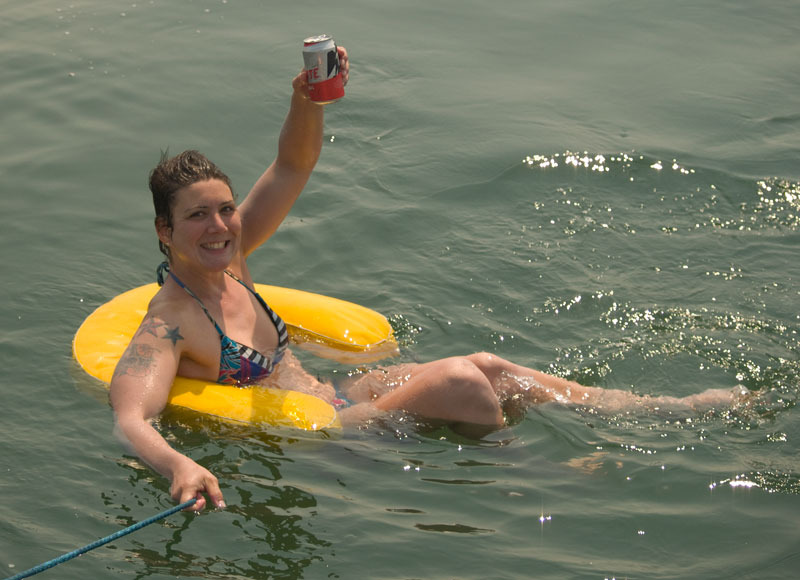
©2017Latitude 38 Media, LLC
During a long postponement, the crews of many Jazz Cup starters, milling about the Central Bay north of Treasure Island, sought relief from the heat, which built to record-high triple digits.
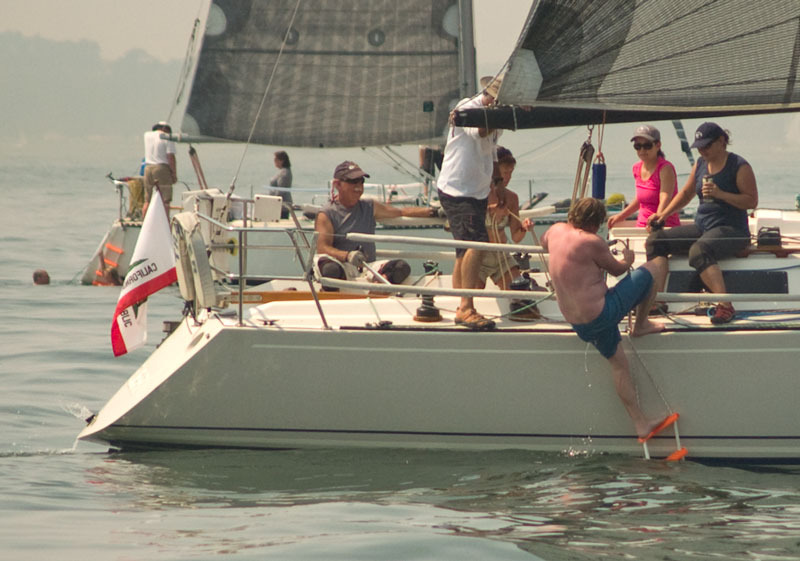
©Latitude 38 Media, LLC
In the end, neither the Windjammers from San Francisco to Santa Cruz on Friday nor the Jazz Cup from the Central Bay to Benicia on Saturday had any finishers. Although a westerly did eventually fill in for the Jazz Cup starters, it petered out short of San Pablo Bay. We’ll have more in Racing Sheet in the October issue of Latitude 38.
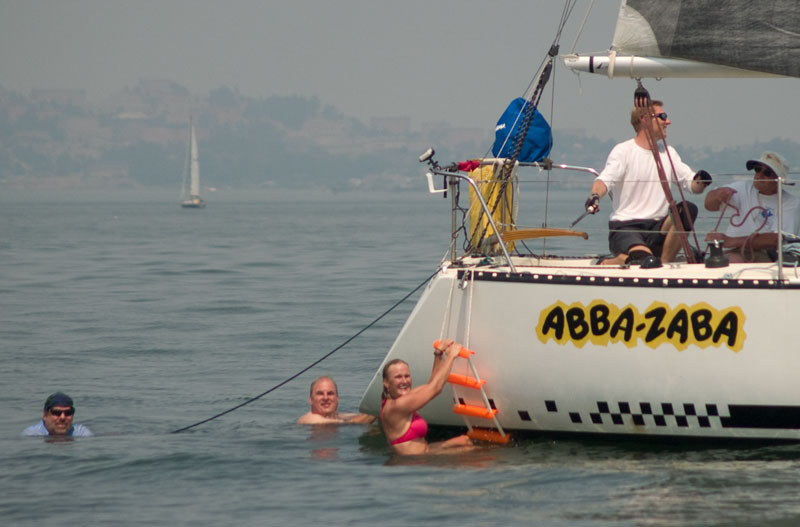
©Latitude 38 Media, LLC
The website www.watertemperature.net claims that San Francisco water temperature is 57°F. "This water temperature is too cold for water sports. Please wear a wetsuit if you like to go into the water." According to NOAA, the water temperature has crept up into the low 60s.
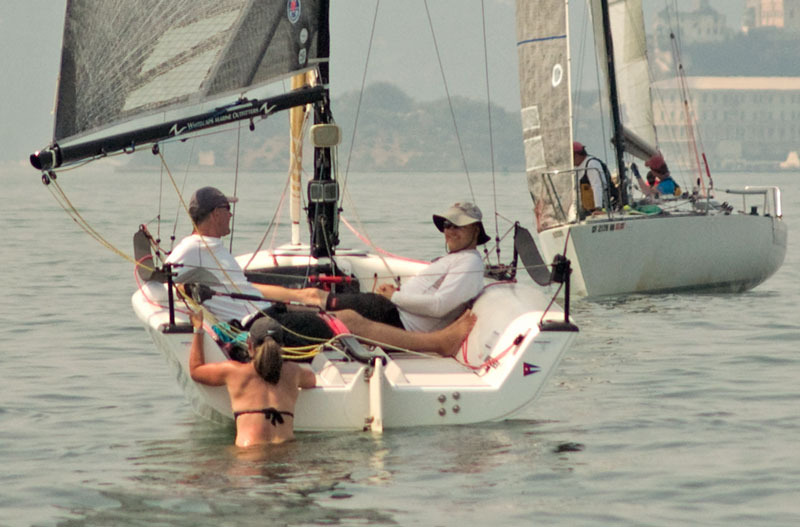
©2017Latitude 38 Media, LLC
PHOTO
Anyone Passing Through?
Did you wake up this morning, make coffee on your gimbal stove, and poke your head through the companionway, into your cockpit and onto Richardson Bay? Are you from Oregon, Washington, British Columbia or even Alaska, and making a pit stop in the beautiful waters of Sausalito, or other Bay Area haunts? Are you waiting for the tropical storm season to settle down before making your way to lower, warmer, drier, colder-beer latitudes?
If this description sounds like you — or someone you know — then you just might be a cruiser, and we want to talk to you. We’re trying to find sailors just passin’ through the Bay Area on their way to Mexico (some of you might even be staging for the Baja Ha-Ha).
So please, to all southbound sailors, friends of southbound sailors, and those envious (or even bitterly jealous) of southbound sailors, please contact us.
